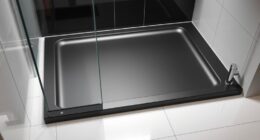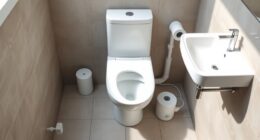So, you’ve found yourself in a bit of a predicament with a toilet that’s on the verge of overflow. Not to worry, because we’ve got you covered with some expert tips on how to unclog it.
In this concise and informative article, we’ll show you the step-by-step process, using simple tools and supplies you probably already have. From plungers to baking soda and vinegar, we’ll guide you through the mastery of unclogging a stubborn toilet.
Let’s get started!
Key Takeaways
- The water level in a clogged toilet can reach dangerously high levels.
- Common causes of toilet clogs include excessive toilet paper, foreign objects, and waste buildup.
- To prevent clogs, use only the necessary amount of toilet paper and avoid flushing items like feminine hygiene products, wipes, or paper towels.
- Regular maintenance, such as using a plunger or toilet auger, can help prevent clogs.
Assess the Water Level
How high is the water level in the toilet that’s almost overflowing? Assessing the water level is the first step in dealing with a clogged toilet.
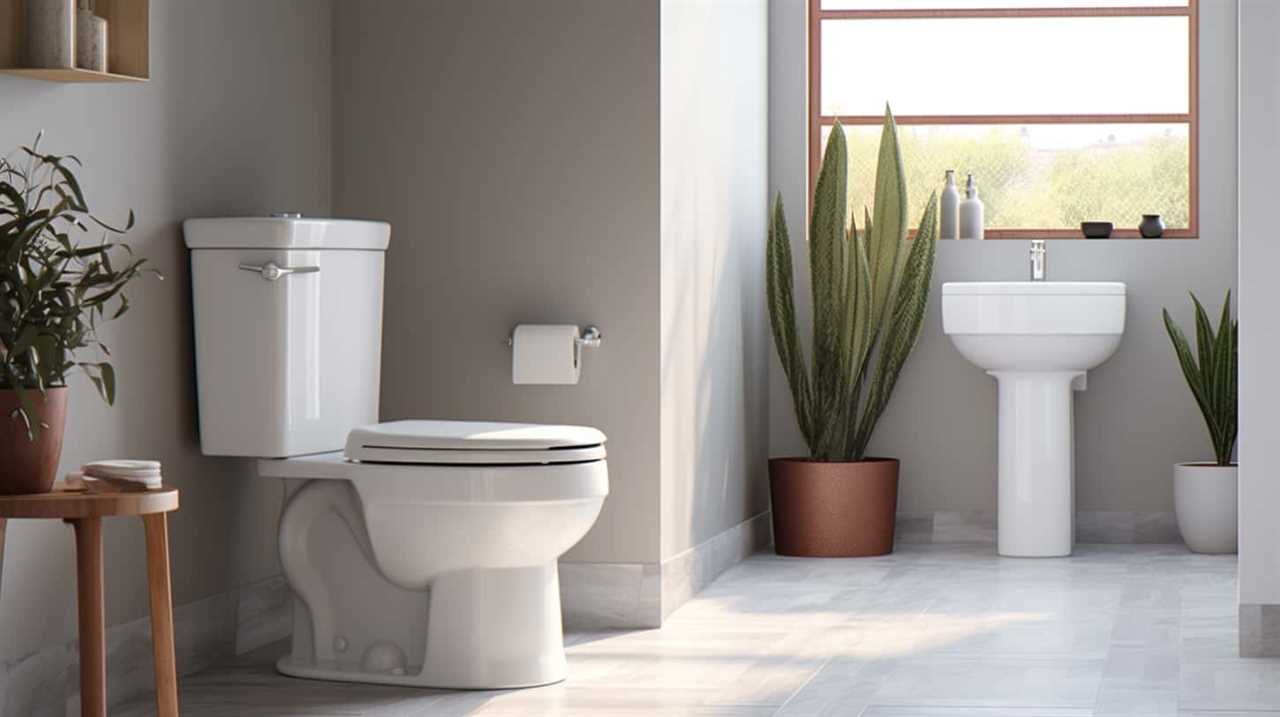
Common causes of toilet clogs include excessive toilet paper, foreign objects, and buildup of waste material. To prevent such clogs, it’s important to use only the necessary amount of toilet paper and avoid flushing items like feminine hygiene products, wipes, or paper towels. Regular maintenance, such as using a plunger or a toilet auger, can also help prevent clogs.
When faced with a toilet that’s almost overflowing, it’s crucial to act quickly. Turn off the water supply to the toilet by shutting off the valve behind the toilet, and then remove excess water using a bucket or a cup. This will prevent any further overflow and make it easier to diagnose and fix the clog.
Gather Necessary Tools and Supplies
To continue addressing the issue of a clogged toilet that’s almost overflowing, we need to gather the necessary tools and supplies. Here are four items you’ll need to successfully unclog your toilet:
- Plunger: A plunger is an essential tool for unclogging toilets. Make sure you have a sturdy, high-quality plunger that creates a tight seal over the drain.
- Rubber Gloves: It’s important to protect your hands from any potential bacteria or mess. Rubber gloves will keep your hands clean and hygienic throughout the unclogging process.
- Bucket: Having a bucket handy is useful for collecting any excess water that may overflow during the unclogging process. It will help prevent any further mess and make cleanup easier.
- Toilet Auger: If the plunger doesn’t work, a toilet auger can be a useful tool to have. This long, flexible tool can reach deeper into the drain to remove stubborn clogs.
Use a Plunger to Unclog the Toilet
We can effectively unclog the toilet that’s almost overflowing by using a sturdy, high-quality plunger. Plungers work by creating suction and pressure to dislodge the clog and allow water to flow freely again.

To use a plunger, start by placing the rubber cup over the drain hole and ensuring a tight seal. Then, push down forcefully and pull up quickly, repeating this motion several times. It’s important to maintain a good seal and create a strong suction.
Common mistakes in using a plunger include not using enough force, not creating a proper seal, and not being persistent enough. Remember to use a plunger specifically designed for toilets, as they have a flange that helps create a better seal.
Employ a Mixture of Baking Soda and Vinegar
To continue addressing the issue of an almost overflowing toilet, one effective method is to utilize a mixture of baking soda and vinegar. This combination creates a chemical reaction that can help break down the clog and clear the drain.
Here are four reasons why this method is worth trying:
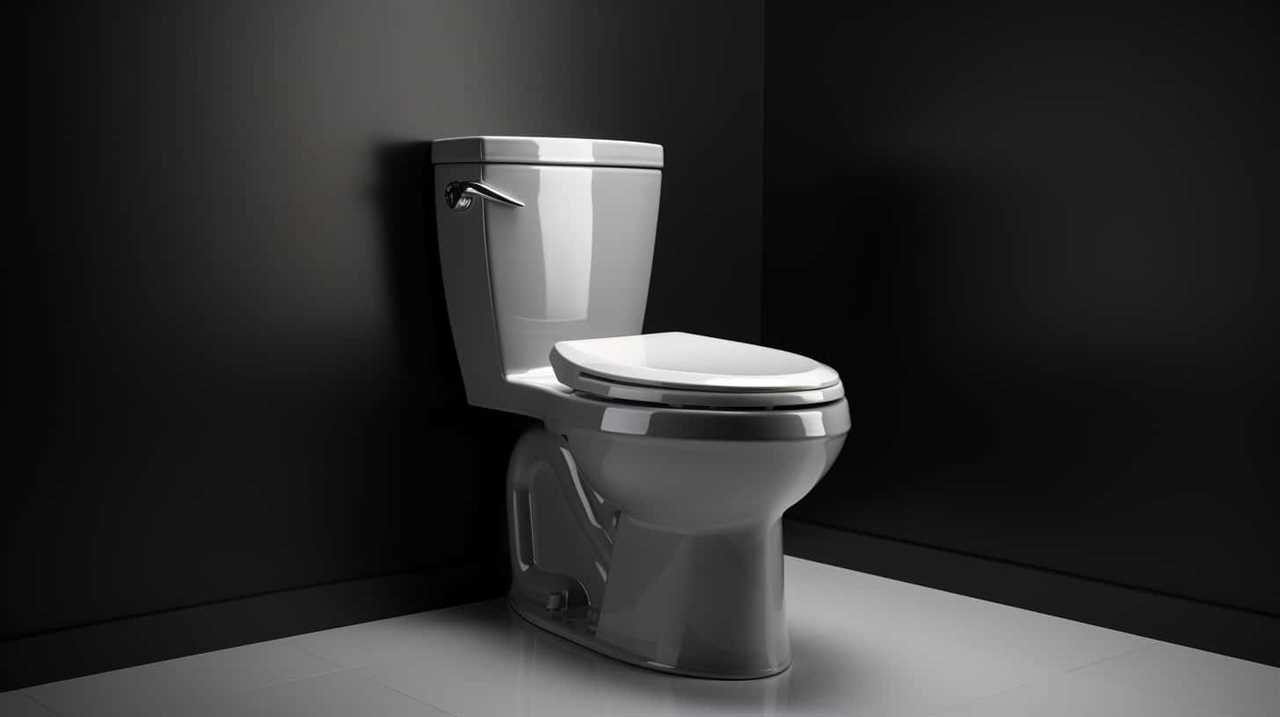
- Baking soda and vinegar create a fizzy reaction that helps dislodge the blockage.
- The mixture is safe to use and doesn’t contain harsh chemicals that could damage your pipes.
- The foaming action of the mixture helps to push the clog through the drain.
- This method is cost-effective and easily accessible, as both baking soda and vinegar are commonly found in households.
Try Using a Toilet Auger for Stubborn Clogs
For stubborn clogs, our go-to solution is using a toilet auger. This tool, also known as a plumber’s snake, is designed specifically to tackle tough clogs that other methods may not be able to handle. A toilet auger works by inserting a flexible cable into the toilet drain and then rotating it to break up the clog. It’s important to follow the manufacturer’s instructions carefully to avoid causing any damage to the toilet.
To give you an idea of how a toilet auger compares to other methods, here’s a comparison table:
| Method | Effectiveness | Difficulty Level |
|---|---|---|
| Plunger | Moderate | Easy |
| Baking Soda and Vinegar | Mild | Easy |
| Toilet Auger | High | Moderate |
| Hiring a Plumber | High | Hard |
While a toilet auger is a reliable tool for stubborn clogs, there are alternatives to consider. If you’re not comfortable using a toilet auger or if the clog persists, hiring a professional plumber is always an option. They have the expertise and specialized equipment to handle even the most challenging clogs.
Frequently Asked Questions
How Do I Prevent a Toilet From Overflowing in the First Place?
To prevent a toilet from overflowing, it’s important to take preventive measures. Regularly maintain your toilet, avoid flushing excessive toilet paper or non-flushable items, and address any clogs promptly to prevent potential overflow issues.
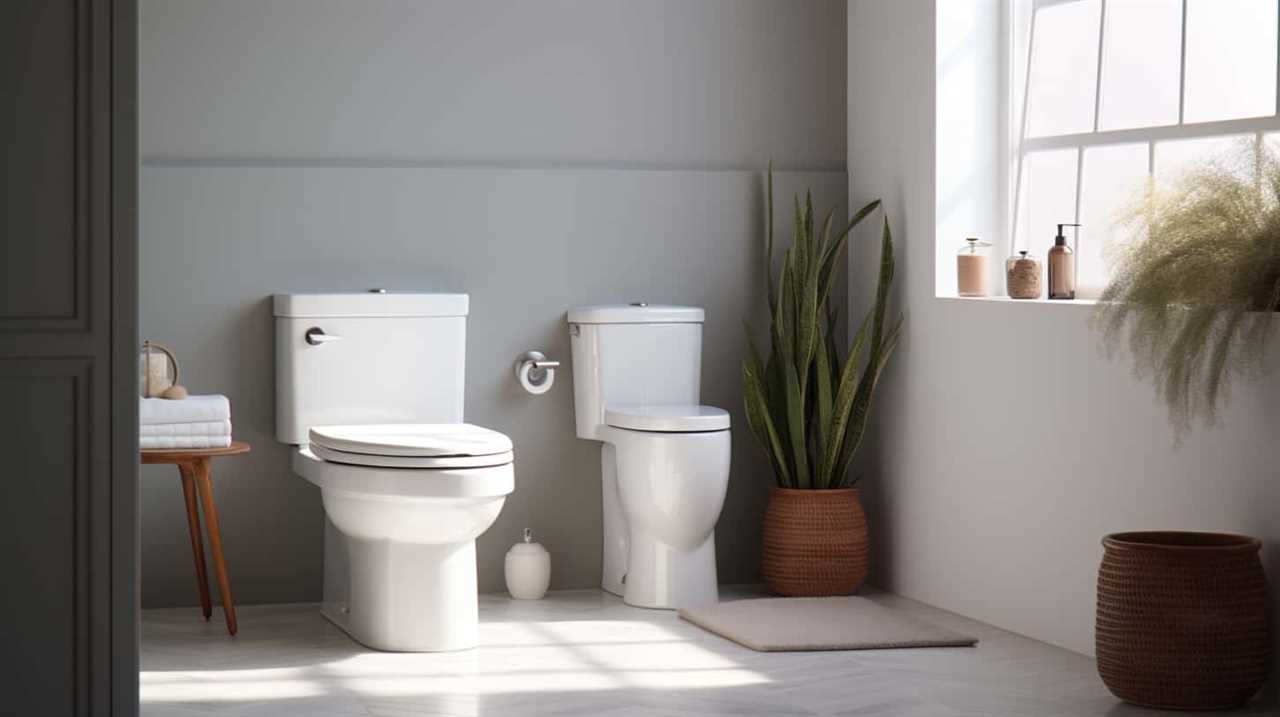
Can I Use a Chemical Drain Cleaner to Unclog a Toilet?
We don’t recommend using chemical drain cleaners to unclog a toilet. They can be ineffective and potentially damage your plumbing. Instead, try using a plunger or a toilet auger for safer and more effective toilet unclogging methods.
What Should I Do if the Water Level Continues to Rise Even After Using a Plunger?
If the water level continues to rise after using a plunger, we should call a professional. They have the expertise to handle the situation safely. Additionally, we can stop the water flow by turning off the shut-off valve behind the toilet.
Is It Safe to Use a Toilet Auger if I Have a Septic System?
When dealing with a septic system, it’s important to take precautions when using a toilet auger. Always consult a professional to ensure toilet auger safety and to avoid any potential damage to your septic system.
How Do I Clean and Sanitize the Toilet After Unclogging It?
To clean and sanitize a toilet after unclogging it, start by flushing several times to ensure the clog is completely gone. Then, use a toilet bowl cleaner and scrub the entire bowl, focusing on the areas under the rim. Don’t forget to clean the seat and the exterior of the toilet as well. Finally, rinse everything thoroughly and make sure to wash your hands afterwards. Some common causes of clogged toilets include excessive toilet paper usage, flushing non-flushable items, and a blocked sewer line.
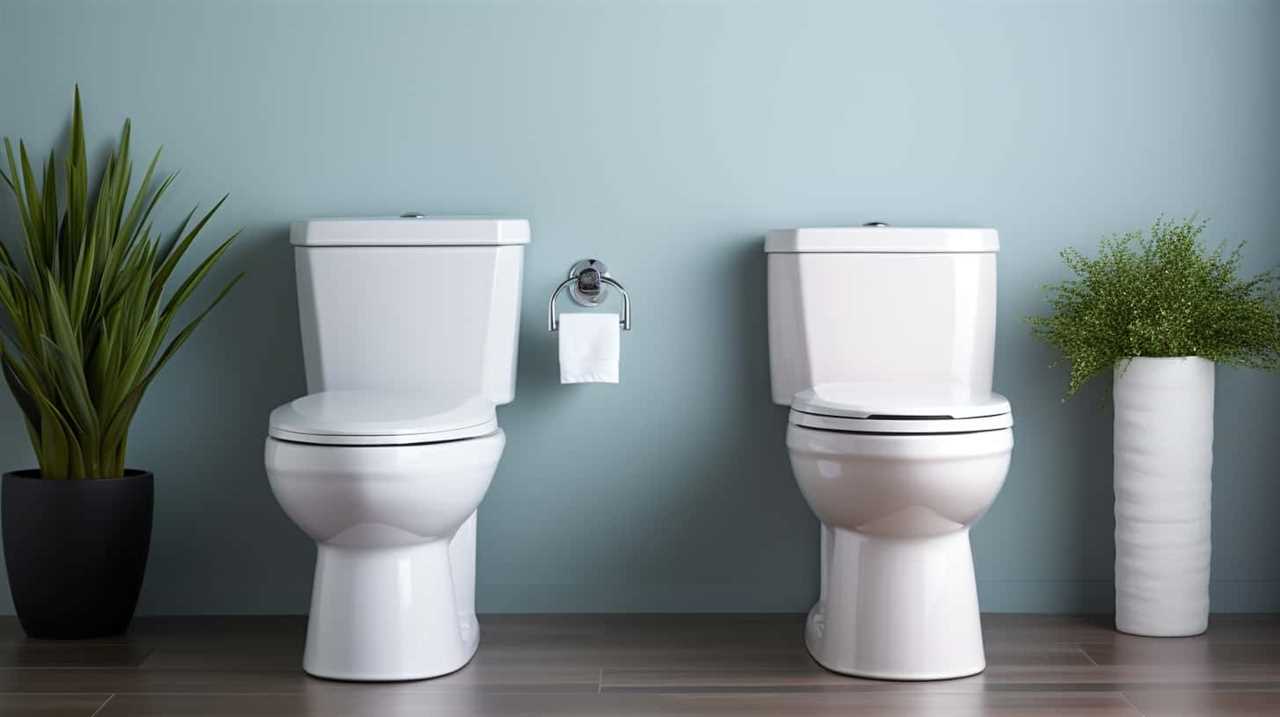
Conclusion
In conclusion, unclogging an almost overflowed toilet can be a simple task if you follow the right steps.
Assess the water level, gather the necessary tools and supplies, and use a plunger or a mixture of baking soda and vinegar.
For stubborn clogs, a toilet auger can be employed.
By following these expert tips, you can quickly resolve the issue and avoid any further mess or inconvenience.








